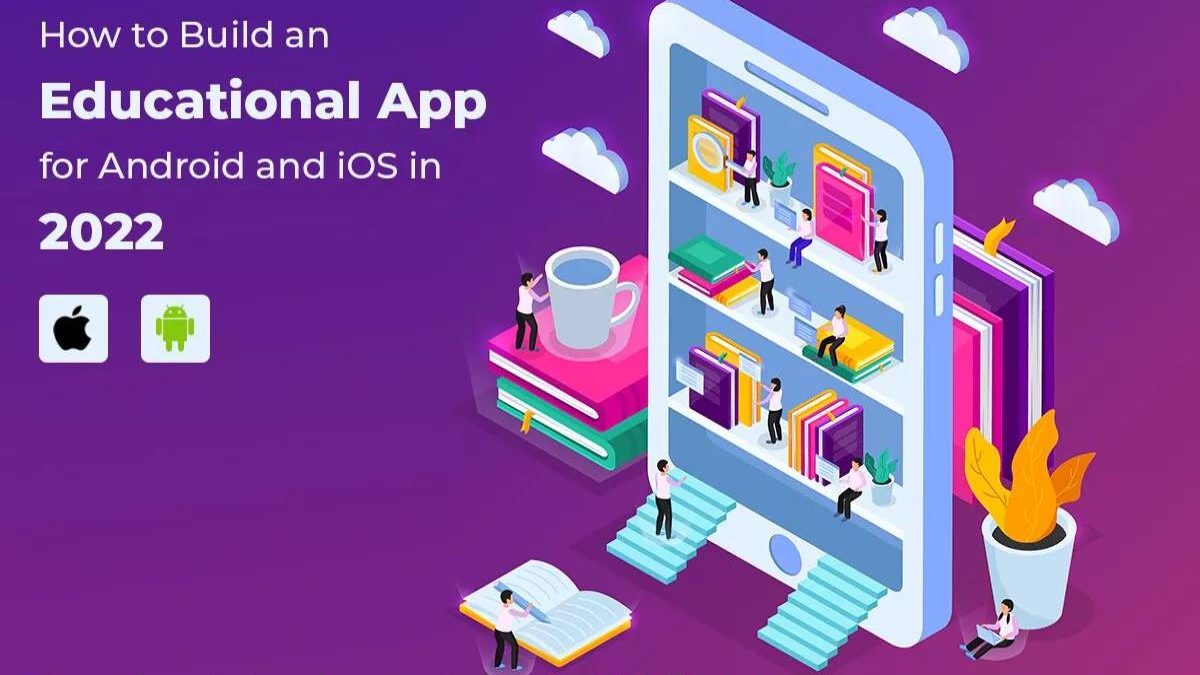Table of Contents
How to create an Educational Application for Android and iOS in 2022?
Educational App For Android And iOS in 2022, In Today’s society. Smartphones have taken on the role of complete knowledge guides. In addition, we are referring to the educational apps that usually appear at the top of the lists of the most downloaded AppStore and Google Play, and not to endless information on the Internet.
In Educational apps, the Most Mutual trends are:
It would help if you did some research on current trends before you get started with mobile app development. Your product will be more attractive to clients if you do this.
1. Virtual reality (VR)
Remote communication in three-dimensional space and the development of a wide range of skills, from painting to rhetoric, are possible with virtual reality. Both the Quiver colorings software for youth and the InMind app for people with mental disorders can benefit from the use of virtual reality.
These experiences allow students to fully immerse themselves in their studies and alleviate any feelings of boredom they may be experiencing with virtual reality. You will be able to appeal to a wider audience than just educational app hobbyists, tech-savvy fans and gamers. However, it is a double-edged sword when it comes to VR development and spending.
2. Augmented Reality (AR)
AR improves the experience of using educational apps by providing outstanding content display capabilities. AR, like its virtual reality complement. It finds a home in an extensive range of educational applications, such as Star Walk, which allows students to explore celestial objects, and Anatomy 4D, which provides a realistic view of the human anatomy in 3D.
If you want to use AR, you will need experts familiar with the technology. Benefits like increased public awareness and new capabilities make it all worth it.
3. Gamification
Gamification can be achieved without using expensive virtual and augmented reality (VR) and augmented reality (AR) technologies. Educational App For Android And iOS in 2022 Lack of user interest and motivation is a common problem with educational apps using games for non-game items. It has the potential to be competitive and fun at the same time.
Among the Best Instances of Gamification in Educational Applications are:
Duolingo: There is a game component to every language learning session with Duolingo (hearts of life, scores, timer);
Osirian: When a user plays an instrument and chooses a song, the app provides immediate feedback on how well they did.
Sol learn: The user earns XP (experience points), competes with other coding enthusiasts and tracks his progress on the global leaderboard while learning the program design language.
At a bit of cost, gamification allows you to keep students interested in your educational app.
4. Artificial Intelligence
Educational App For Android And iOS in 2022 Advanced Intelligent Virtual Assistants (AVAs) have been used in various industries. Including creating educational apps. Thanks to recent advances in AI. The VAT assumes responsibility for all aspects of learning in the application: information and management.
Clever algorithms can analyze a user’s skills and then adjust the style, complexity, and material to suit the user’s needs. Adaptive learning can remain achieved by joining AI into your educational software, and you and your customers will benefit as product quality remains raised to a new level. In addition, implementing AI will save money on scientific specialists by determining how difficult each piece of information should remain.
As a substance of strategic relevance, you must consider all the components of the type of application you remain designed. Sympathetic trends remain vital.
Apps for teaching and learning
The type of instructive app you develop will impact who you want to reach and how you do it. Let’s look at some of the most general models on the market and see how they stack against each other.


